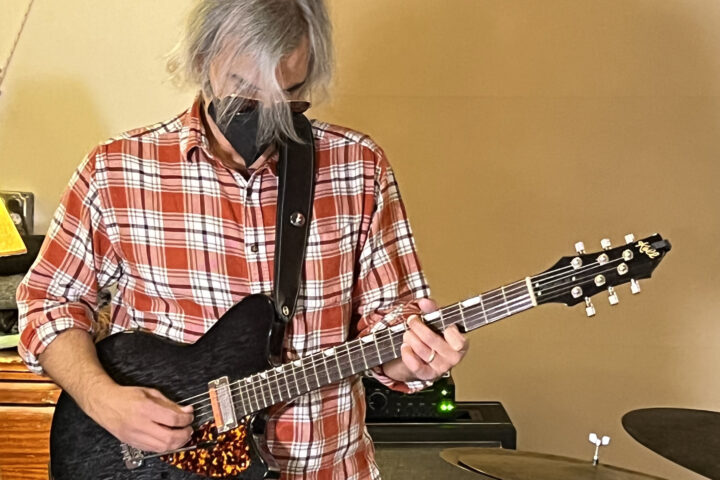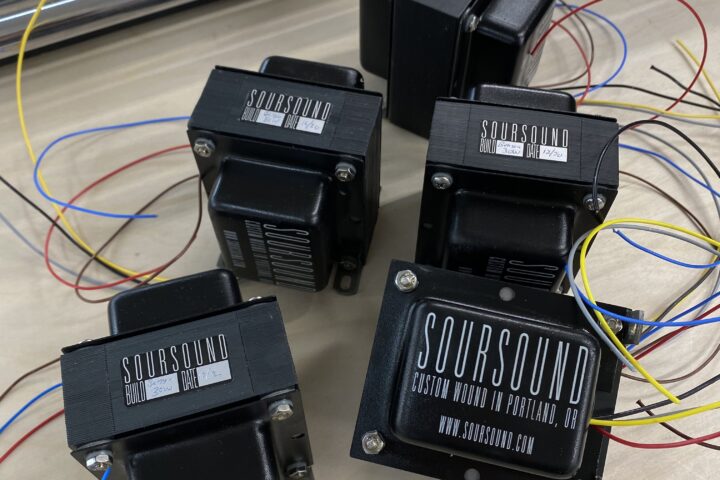Curtis Novak is another refugee from the tech sector who’s found a comfortable and rewarding niche in the guitar business where he can indulge his passion while making the best use of his talents. We had the distinct pleasure of making his acquaintance at the most recent Fretboard Summit (and have heard his fantastic pickups in more than a few guitars) and immediately decided we needed to feature him here. It took a little while for the stars to align, what with the holidays and the madness of NAMM, but we finally caught up with Curtis and are pleased to share the results of our conversation here.
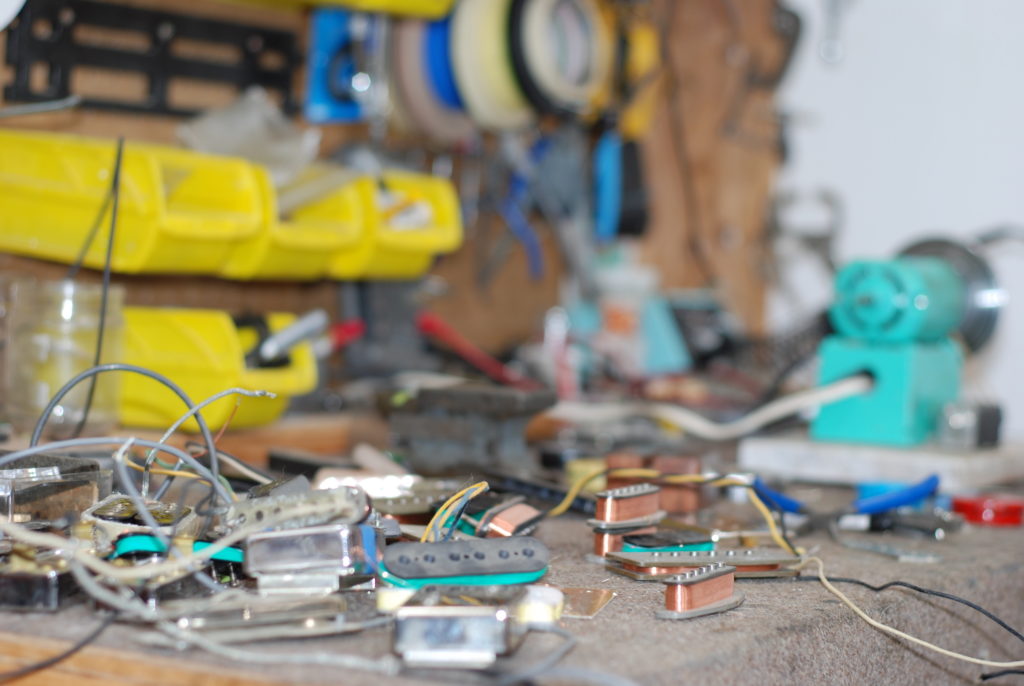
Fretboard Journal: What’s on your bench right now?
Curtis Novak: A perpetual snarl of tools, pickup parts and ideas. Having ADD I tend to have multiple R&D projects moving across my bench all at the same time. I will be physically working on one project, while my mind is solving four other issues or dreaming up something new. Thankfully I was blessed with a supervisor in my head that keeps me on task–I am actually rather productive and finish things despite the disarray.
FJ: How did you get started?
CN: At a very young age, I was that quintessential kid that took my dad’s drill apart. Actually, as a kid I had this bad habit of taking everything I got my hands on apart. My first guitar and amp were no different.
At 13, I came to the realization that I had to have a guitar. It was a really crappy Strat copy I bought off a pal with three months’ worth of lunch money. I really wanted to learn to play guitar but I never became a proficient player because I could not stop taking the damn thing apart. I reshaped the neck, refinished the body, rewired it a zillion times playing with different tones. After much research I came to the conclusion it was the pickups I needed to change and Seymour Duncan had exactly what I needed. I’m sure I drove him nuts with all my inquisitive yet pestering phone calls.
In 1980, for my birthday, I got Seymour’s Vintage Strat set and they were amazing–it totally transformed my guitar! I installed them without covers and in a few weeks a friend broke the coils. I contacted Seymour to see if he could repair them and he said, “Sorry, we only repair vintage pickups.” I could not afford or justify buying another set, so I set out to figure out how to rewind them myself. Growing up in New Mexico, decades before the internet, there were not a lot of resources at hand so I did the only thing I could think of: cold call Fender and Gibson. Often I would get nowhere, but every once in awhile I would get an old timer that would love to talk about the old days. From those folks I got so much valuable information.
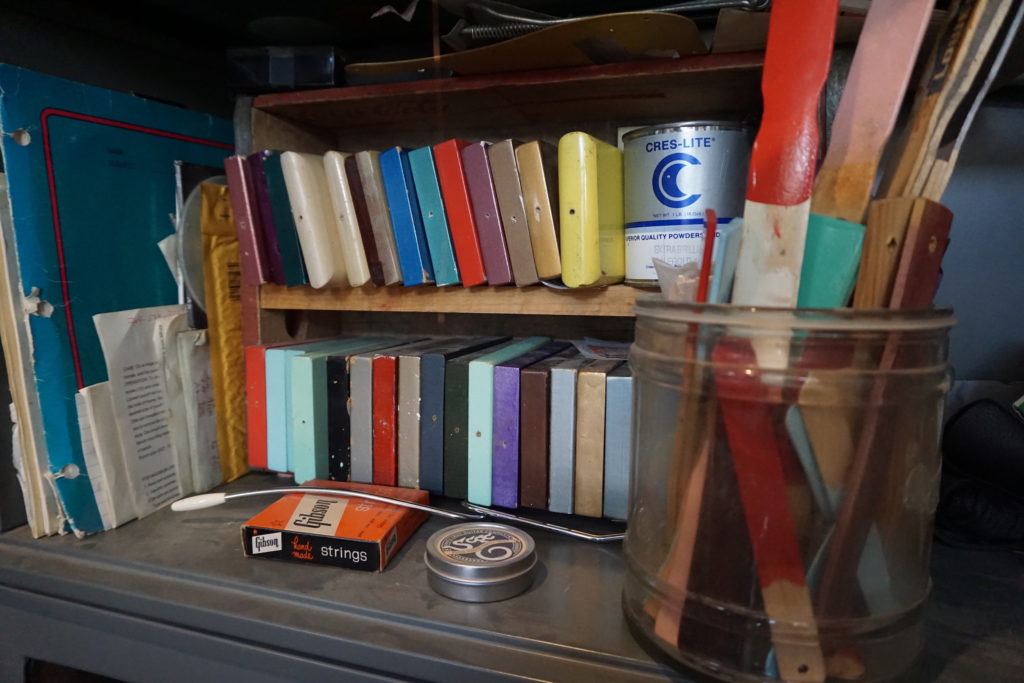
In time I started getting pretty proficient with painting guitars, and in the late 80’s, while in college, I started focusing on vintage finishes. Being in Buddy Holly country, the pawn shops were flooded with vintage guitars. They were pretty pricey for a college student, but you could get ones with stripped finishes for next to nothing. As luck would have it, there was local DuPont paint dealer in town that had all the original paint chip books from the ’50s. With the info I collected from the old timers, the paint shop and the pawn shops I helped put myself through college by restoring vintage guitars.
In 1991 I received my Computer Science degree and and started working at one of our National Labs. I had access to Usenet, a text-based world-wide community with focused groups of interest on any topic you could imagine. There I shared ideas with people from all around the world. Being a computer programmer and having worked in visual arts and communication, I created some of the first websites in the world. It became my new platform of communication to share my ultimate passion of guitar restoration. Back before search engine paid ads existed, if you did any search related to vintage guitars, finishes and pickups I came up first. I always came up before Fender and Gibson, even when you searched for their products. Over the years I have had numerous offers to take me to the “big time” but turned them all down. Having an awesome day job that paid for my passion, it was not necessary nor my desire to make it big.
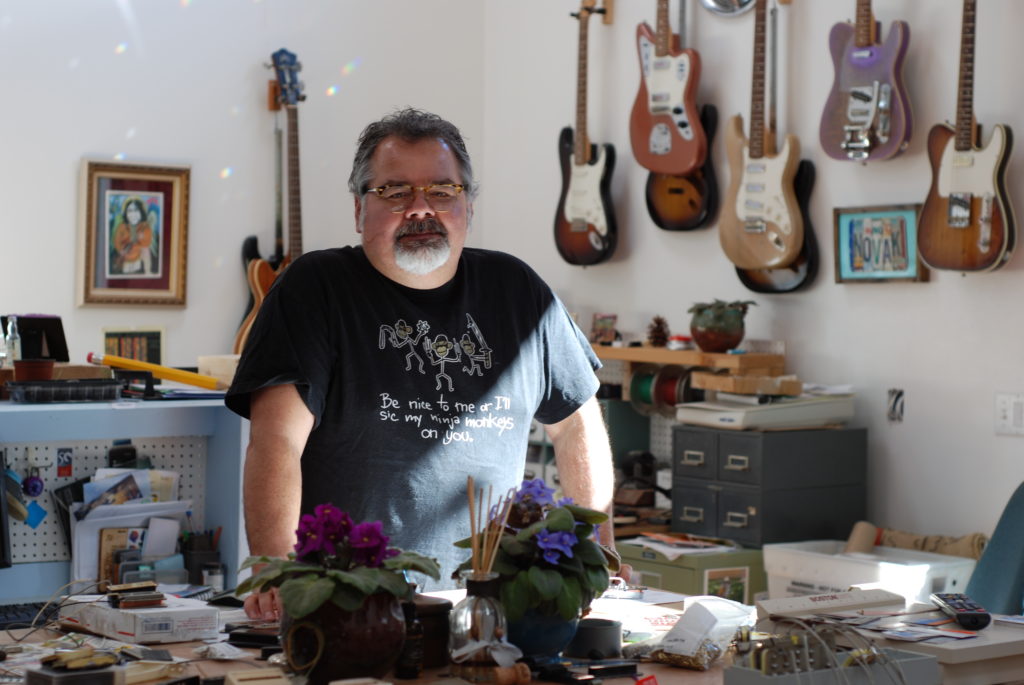
In all my years of research, I came to realize what transformed something that was once great to mediocre could always be traced back to the point when their focus shifted from making something unique and useful to making money. I accept that this view has likely held back my potential business growth in this flooded pickup market, but I have always had a very strong, loyal following and way more work than I can handle. When I am gone I want to be known for making great pickups not for having a great market share.
In 2006, after 15 years as a Computer Scientist, I finally reached my tipping point and walked away from my successful career and good pension to do this full time and have never looked back. As fun as that job was, I always had someone in management telling me, “Great idea, but no.” Being a creative person I found it very frustrating and unfulfilling to have so many ideas mothballed. I believe the ultimate success of my business is rooted in my desire to always take the road less traveled, color outside the lines, don’t follow the rules and uphold a curious and wildly active mind.
In hindsight: I might have succeeded as a guitar player if my first guitar would have been an acoustic.
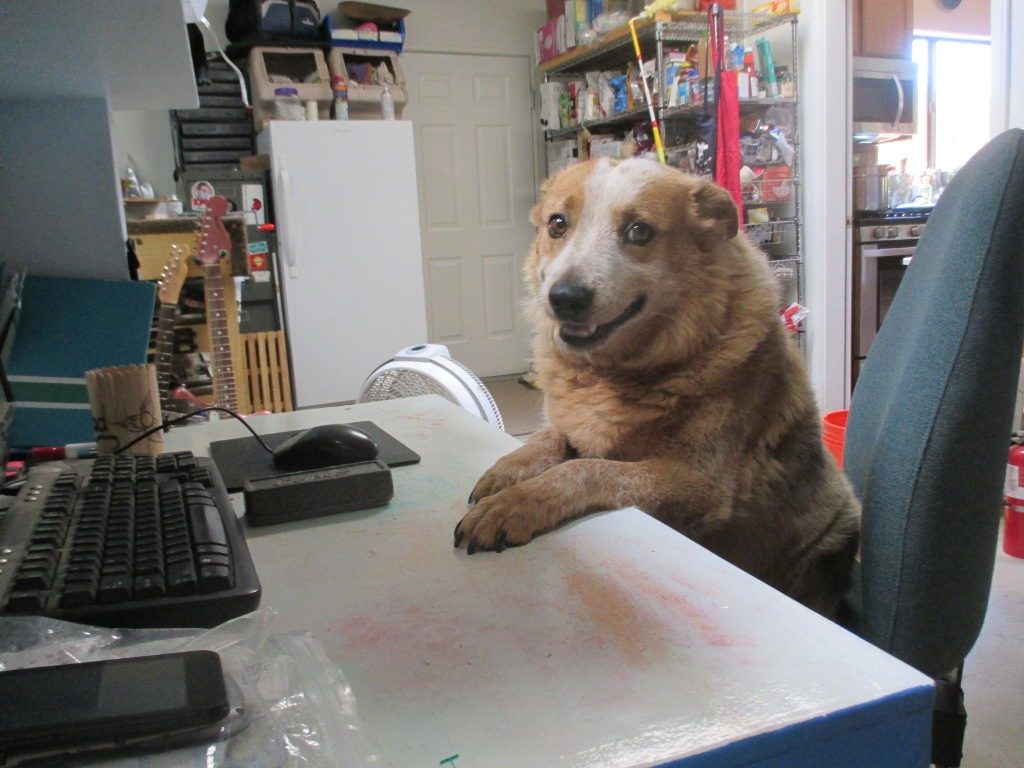
FJ: Can you tell us about your shop?
CN: In 2010 my wife and I decided to move to Southern California, near Joshua Tree after being in North Carolina for five years. Although it is a relatively small shop we have everything here that we need. Drill presses, laser cutter, milling machine, injection mold machine, shop dogs, winders, saws and enough room for my small production team. I have been fortunate enough to find a few individuals that share my musical passion and can keep up the quality and pace of my business. After I have solved the problem of a new pickup I turn it over to my team (who are far superior at production than I) so I can focus on what I do best, R&D. Everything here is hand-made, hand-wound and full of heart. Not to mention powered by the sun! We have 39 solar panels soaking up the desert rays and powering everything we use.
FJ: What makes a good guitar pickup?
CN: Listening to the customer and separating what you like from what they like. I am not one of those that believes there is a single Holy Grail pickup that I discovered, and it is my job to convince you that I am right and all others suck. I feel good tone is like spicy food; what one calls hot another calls mild.
The best sounding pickup is in the ears of the customer. For way too many years this industry has trained people to hear with their eyes and not their ears. Someone has resurrected some piece of equipment, got the specs from some great pickup and found an automated way to mass produce it, making things “look” vintage, convincing people it is the age of the material and they have a way to speed up the aging process, or that they have sourced a limited supply of some bygone material that makes something great. All this time people have become focused on researching all these claims, choosing which they believe are true and standing by that claim way before they ever buy and install the pickup. So when they first hear it they are already prepped to say, “Yes, I was right this is it,” but that feeling does not last. Often when someone approaches me for the first time, specs in hand, I inform them I am sorry I do not work that way. I prefer you to tell me what you like and dislike in your tone, the types of music you play and equipment you use and I can go from there. Some are put off by this approach and I happily provide them with a list of other winders that can better assist them. With my naturally inquisitive nature I have spent much of my early years studying the nuanced properties of pickups, and with my scientific training and background I learned how to analyze objectively and not let my “research” or ego dictate the outcome. With this, I am pretty good at helping you find that elusive tone that haunts you. Just as there is not one paint brush that all great paintings are created with, there is not one pickup.
My basic philosophy with pickups is to look at them as a sensor, an input device. Most people have been trained by the industry to rate pickups on their output and come to me speaking in terms of output. When you evaluate and focus on output you miss the ultimate power of the device.
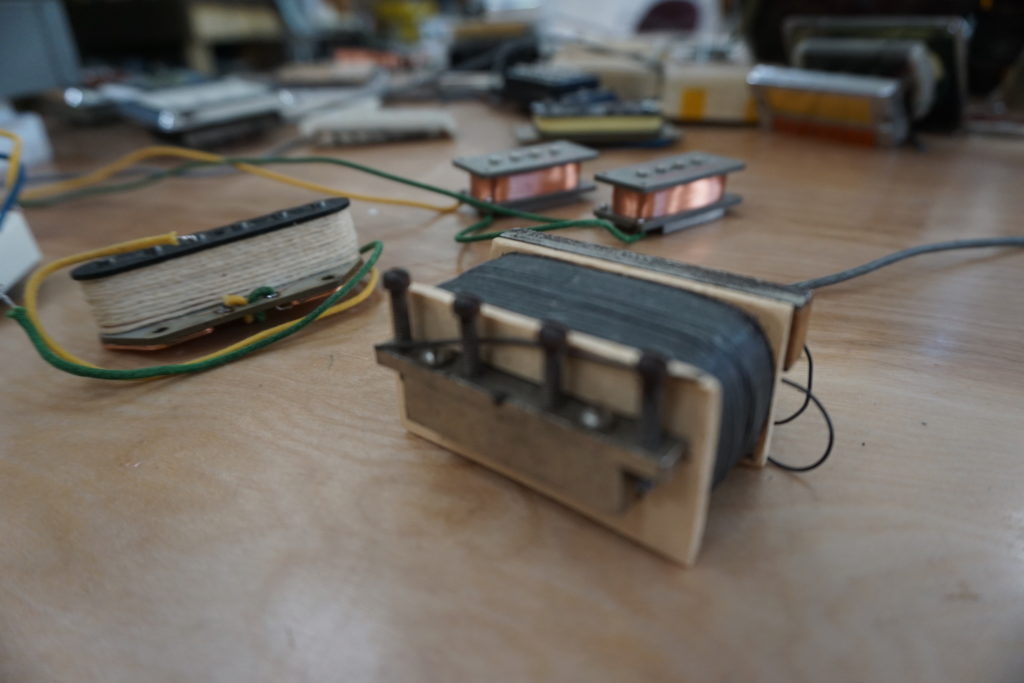
FJ: Gold Foils are kinda all the rage these days, and you make several versions–can you tell us a bit about what you’re doing there, and do you have any thoughts on their renaissance?
CN: Actually, if you were to track my work over the years you will see there are many other pickups I obsessed over getting “right.” I have always been attracted to the neglected or underrated. Once I feel I got it and the market gets crowded I move on to something new. I was originally known for my Strats and Teles. I then went to Jazzmasters–which was an extremely untapped market. There were only a couple people making them and the only non-traditional option was Seymour’s Quarter Pounder. I saw it as a perfect platform for exploring. Next on the bench were other offsets, the Wide Range humbucker, then the Bisonic/Darkstar. All the while I was tearing apart any Gold Foil I could get my hands on.
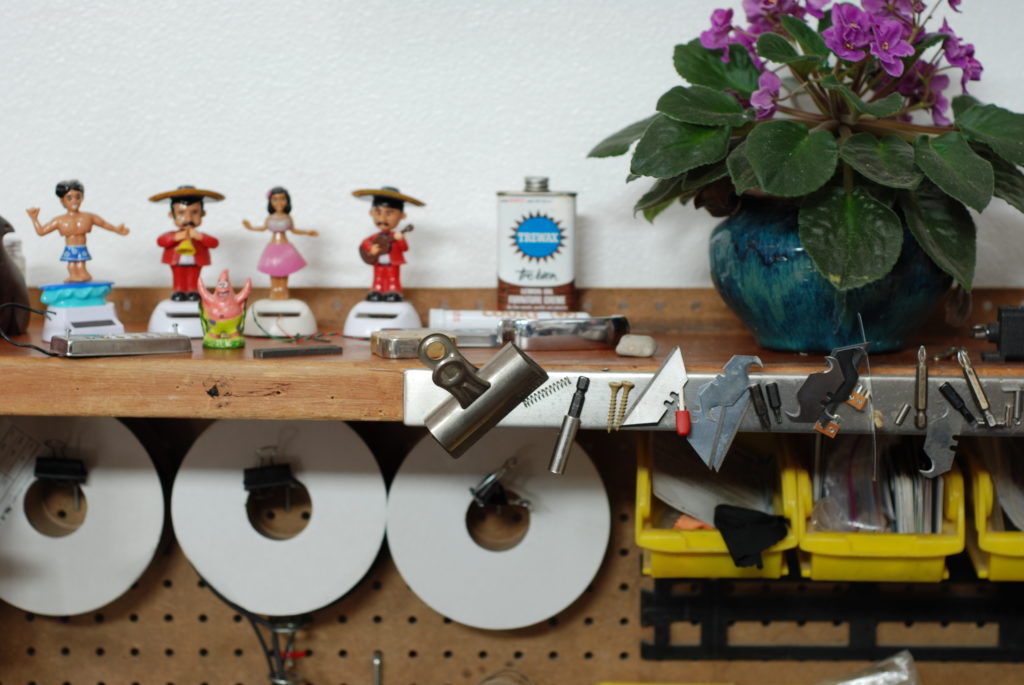
The funny thing about Gold Foils is most of them were pretty sucky pickups. They were created for a budget/student market and designed more for visual appeal rather than tonal quality. However, by accident there were a select few that really got it right. Yet since they were on such low budget instruments people never knew. Much of my early Gold Foil work was with the alt country players wanting a funky yet stage-worthy guitar. I would often gut the pickup and make a completely custom pickup to fit the shell. It was much like a Sleeper Hot Rod. Someone with a Les Paul would turn their nose up at this guitar until they’d crank it and start “cutting heads.”
The limiting factor to producing the Gold Foil pickup was always sourcing the parts. There were always some funky metal parts that would cost over $15k to have fabricated and there was never that large of a market to support that sort of outlay. So for over a decade I was stuffing them in Jazzmaster, soapbar, and humbucker covers. Over time I became known as the go-to source for nontraditional stuff. Through the years I grew that Gold Foil market by reinvesting the capital from my previous obsessions. At present I have settled on two main Gold Foil designs that I think are some of the best: the DeArmond style, which is much akin to a P-90, and the Guyatone style which has a beautiful clarity and the most amazing Fender-like bell tone. I am doing all the usual traits when I obsess on a design and tricking them out with as many different permutations of options I can imagine.
Like the Jazzmaster and Wide Range market 10 years back, I think I have found what I was searching for. It seems like everyone is making Gold Foils now, which means it is about time for me to move on to the next thing.
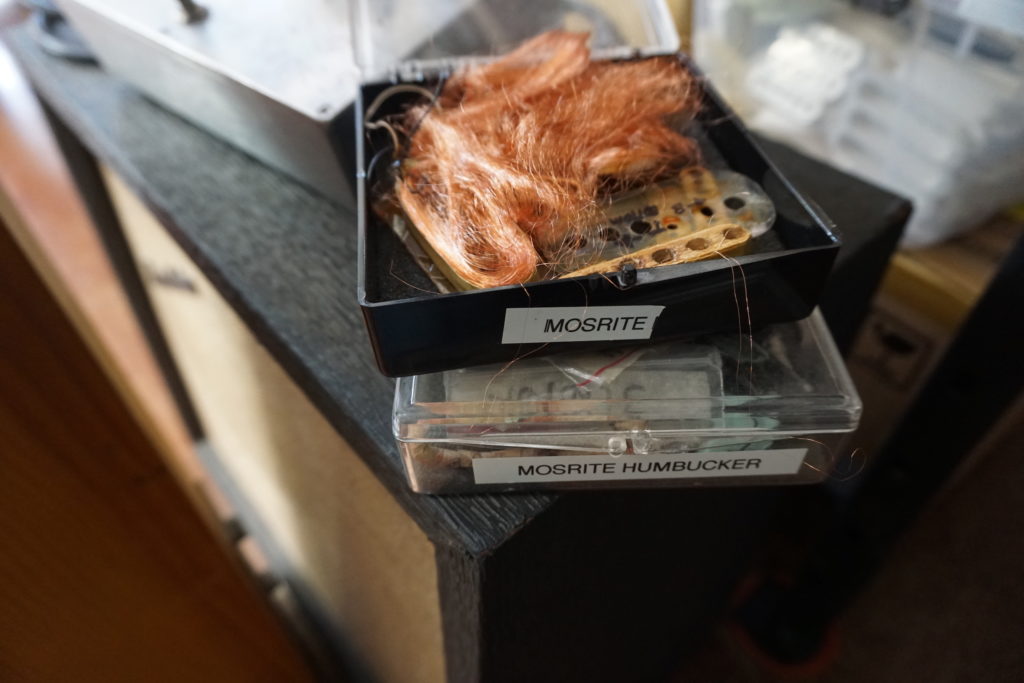
FJ: Well, what’s the next thing?
CN: I really do not know what is next, and that does not concern me. I make a point to not be that deliberate and intentional when I explore and create. My approach is a little different than most I think. I first am drawn in by a unique tone, not a unique look. I then first figure out how to recreate that tone. When I feel I have the tone where I like it I then work on outer appearance. Before I will go to all the added expense of fabrication I have to be sold on the uniqueness of the tone.
I have a few smaller projects like the Burns Tri-Sonic, Carvin AP-6 and Mosrite that I am making but those were all pretty straightforward. One thing I have been doing of late, which I do periodically, is going back through my core catalog of pickups and reexamining them. I still learn so much doing repairs and exploring. Sometimes it is a very small thing I have overlooked 100 times before. Being able to look at it with fresh eyes, or fresh ears, I find a gem. At this point I have been reexamining all my pickups and tweaking them making them more harmonically rich. Sometimes I see stuff I made 10 years ago and think, “Oh man, what was he thinking!?”
FJ: How has your repair work influenced your own pickups?
CN: My repair work has greatly influenced my pickups. I think like most any trade there is much to learn in doing a “forensic examination” of what was done in the past. I get a lot of requests from other pickup winders relatively new to the business asking me to take on their repairs because they are too busy with their new orders. Sadly, I have to say no as I am already too busy with my own repairs and new products. I too have toyed with stopping repairs, as it takes up much of my time, but I see it as a necessary evil because even after all these decades there is so much to learn from every repair.
FJ: Are their any repairs/restorations that are particularly memorable for you?
CN: There are so many I can’t put a finger to one. I have had the privilege to work on so many rare, historical and high profile pieces that it has all become a blur.
FJ: Are there any upcoming projects that you’re excited about?
CN: Yes. The one I have not yet seen!
